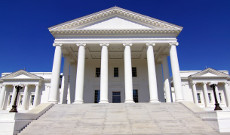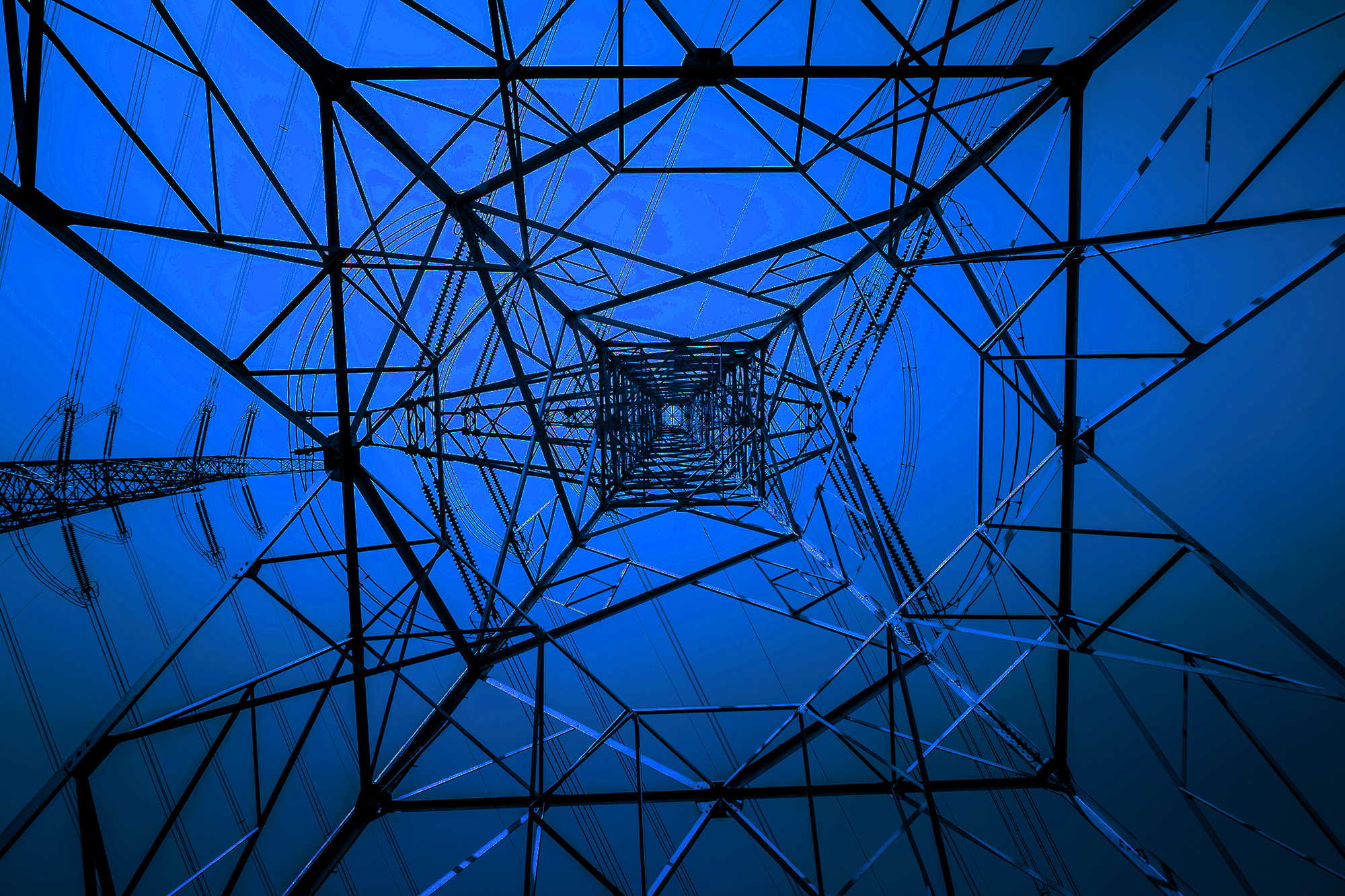Service Providers

Project Developers
Project Development
Project Assessments
Project Due Diligence

Energy Service Providers
Feasibility Study
Economic Analysis
Risk Assessments

Constructors - Consulting Engineers
Technical Services
Project Development Support
Independent Engineering
Utilities

Investor-Owned
UESC Program Support
Microgrid / Storage Pilots
Electrification Programs

Municipal
Demand Response
Load Management
Microgrid / Storage Pilots

Cooperatives
Load Management
Demand Response
Microgrid / Storage Pilots
Governments

Federal
Defense
Civilian
Intelligence

State
State Agencies
State-Owned Facilities
Higher Education

Local
Law Enforcement
Emergency Response
Public Works
K-12 Education
Industry

Critical Operating Facilities
Data Centers
Communications
Research & Development

Clean Manufacturing
Semiconductor
Pharmaceutical
Medical Device
Biotech

Healthcare
Critical Power
On-site Cogeneration
Renewables
Service Providers
Energy Services to Energy Companies.
Service Providers
With the exception of Service Providers, who consist of Energy Service Companies, Energy Project Developers, Consulting Engineers, and Contractors of all types, all other categories of customers PowerSurety serves are owners, utilities, or energy consumers. However, since PowerSurety’s consulting services are largely procured on a subcontract basis, we consider Service Providers to be a primary customer set of ours.
PowerSurety is expert in virtually all aspects of project development and delivery. We offer project development services in turnkey fashion through performance-based Project Development as a Service agreements, or if preferred, we can plug into various phases of project development in on-demand fashion to fill capability or resource gaps. We are flexible and dedicated to providing only the highest quality deliverables and work products.
Although PowerSurety has deep technical expertise in most aspects of energy management methodologies and systems, including demand response, energy efficiency, and power quality and reliability, we also have extensive experience in the commercial structuring and financing of energy infrastructure projects.
We focus on leading edge technologies and integrated systems that are in high demand – microgrids, energy storage, and distributed energy resources – and are still somewhat nascent in their evolution. Consequently, finding subcontract-level resources can be a challenge since many of the companies involved in the microgrid industry are manufacturers with a vested interest in getting you to use their widget, software, or manufactured product.
PowerSurety has no vested interest in any technology, product, or fuel type. We simply focus on the requirements at hand to develop cost effective, financeable, and operationally viable projects that achieve the business and organizational objectives of their owners and/or sponsors.
As evidenced by the CAPABILITES and SPECIALIZED EXPERTISE sections of this website, PowerSurety principles have a wealth of real world microgrid and energy resiliency project experience that we’d like to share with you. We also have a deep belief that energy efficiency, peak load management, and energy resiliency are indelibly intertwined and that without aggressive efforts to lower baseline energy usage and peak demands, that resiliency projects will cost more and perform less effectively.
Please refer to our SERVICES and DELIVERABLES pages to learn more about the specifics of what we offer and then connect with us to discuss how PowerSurety might be of service to you and your organization.
Utilities
Electric utilities of all types – investor-owned, municipal, cooperative, and generation and transmission – are awash in change.
Generation
On the generation side, we’re seeing steady growth in smaller, natural gas-derived peaking assets and utility scale solar and wind. In July 2015, municipal utility, Austin Energy, bought 1.2 GW of PPA-based solar for less than $ .04 per kWh. Less than two years later, Tucson Electric Power (TEP) purchased 100 MW of solar with 30 MW of four-hour duration energy storage for a PPA price of only $ .045 per kWh. According to TEP, the solar portion of the PPA was priced at only $ .03 per kWh – likely the lowest solar price ever recorded.
At the same time, we’re seeing early-life shut downs of traditional coal-fired power plants and nuclear facilities such as Three Mile Island 1 and Quad Cities not clearing the 2017 PJM capacity auction for planning years 2019-2020. Word from Exelon is that the Three Mile Island plant will be shuttered in 2019 unless the state of Pennsylvania approves a policy shift that, in essence, would classify nuclear power as a clean power source like solar and wind. Such a shift would provide the plant with much needed revenue additions, but that seems somewhat unlikely due to state budget constraints and resistance from non-nuclear power generators.
Transmission and Distribution
States like California, Nevada, Arizona, and Colorado are pushing for renewable generation percentages of 50-100% by mid-century. With these kinds of penetration levels, the U.S. Energy Information Administration (EIA) is estimating that the U.S. will need to spend more than $2 trillion by 2035 in order to accommodate such significant quantities of intermittent renewables without disrupting the grid.
This investment would include much more than simply adding new power to remote renewable generation sites. Unlike much of today’s grid that transmits power in a single direction from large, centralized generation facilities, a modernized grid must be capable of handling two-way power and data flows from numerous smaller, distributed points of generation. Another challenge related to distributed energy resources (DERs) is how to value them based on time-of-use and geographic location on the grid.
Changing Policy, Regulation, and Business Model Challenges
In addition to the sizable grid modernization investments that must be made – and the need to recover those costs – with solar prices nearing or below grid parity in many states, utilities are trying to figure out how to deal with behind-the-meter grid defections and corresponding revenue losses. To generate new revenues, some utilities are getting into the solar industry through non-regulated internal startups. Meanwhile, others are pushing for increases in the fixed fee portions of utility pricing.
All of the above issues are challenging and complex with no easy or simple answers. However, utilities, state regulators, legislators, and federal policy makers alike are working hard to pilot regulatory changes and craft new business models that will address these 21st century utility industry challenges.
PowerSurety principals have worked closely with utilities of all types over the past 25 years and are committed to supporting their efforts in addressing the challenges outlined above. Although PowerSurety doesn’t make policy or regulation, we do understand how changes in both can be applied to address the dynamic needs of public utilities. Whether demand response, microgrids, renewable energy, energy storage, energy efficiency, DERs, or all of the above, PowerSurety provides both technical and commercial support focused on developing cost-effective and economically viable choices for utilities and their end-use customers.
Governments
Improved Energy Efficiency and Microgrid Islanding Time.
Federal
The U.S. federal government spends approximately $7 billion annually to heat, cool, and power its buildings. Although square foot energy consumption in these building has dropped by just over 15 percent since 2003, most agree that much more can be done.
In 2016, the consulting firm, Noblis, compared the energy efficiency of U.S. Department of Defense (DoD) buildings, commercial buildings, and buildings owned by the General Services Administration, controlling for building size, function, and geographic location. Their analysis estimated that DoD could reduce its energy consumption by an additional 15-35 percent. Taking the mid-point of that range as a point estimate, they concluded that DoD is leaving $1 billion a year (25 percent of its $4 billion-a-year utility bill) on the table.
A significant impediment to the government in achieving higher levels of energy efficiency is a lack of necessary building-level usage data. According to Noblis’ study, as of 2016, only 23 percent of the DoD’s connected electrical load was being captured by advanced metering systems. Another impediment to achieving more impactful results is the inability to combine third-party financing from energy saving performance contractors with capital improvements funded by congressional appropriations. This inability to blend funding sources precludes the government from capturing synergies between energy conservation measures and capital investments. Lastly, for many years, energy efficiency was largely viewed as a way to comply with statutory mandates and executive orders rather than as an essential element of mission readiness. In many cases, this lack of connectivity to core mission deterred senior leaders from viewing energy efficiency as a strategic issue worthy of high-level focus.
In spite of the above impediments, a key factor that should help drive additional energy efficiency reduction levels is the growing realization by senior leadership that energy efficiency and energy security are inextricably linked. The fact is that the lower peak electrical demands are, the less capital-intensive resiliency projects will be. And the lower a facility’s baseload energy usage is, the longer microgrid islanding time becomes for onsite generation and energy storage assets during extended grid interruptions.
PowerSurety works closely with federal agencies, their contractors, and utilities, to provide a wide variety of services including Energy Program Office support, project-level assessments and due diligence, project facilitation, and transactional structuring, to name a few.
State
Governors and state-level legislators and regulators are increasingly recognizing that energy efficiency, peak load management, and renewable energy are critical state-level opportunities that keep money in the local economy and create jobs.
According to the American Council for an Energy Efficient Economy (ACEEE) in its 2016 State Scorecard report, “Utilities across the U.S. invested approximately $7.7 billion in energy efficiency over the past year. Meanwhile, states are also spurring investment through advancements in building energy codes, transportation planning, and leading by example in their own facilities and fleets. These investments reap large benefits, giving businesses, governments, and consumers more control over how and when they use energy.”
Also, according to the Database of State Incentives for Renewables & Efficiency at the North Carolina Clean Energy Technology Center, (NCETC) 60% or 29 of 50 U.S. states (plus Washington, DC and three U.S. territories) have currently adopted legislatively approved Renewable Portfolio Standards (RPS) mandating that some percentage of each electric utility’s generation portfolio consist of renewable-generated electricity. As examples, the state of Hawaii has mandated that 100% of utility-generated power be from renewable sources by the year 2045; New York and California have both imposed a standard of 50% by 2030; and in Colorado, a standard of 50% by 2020 has been imposed.
Add to this the fact that NCETC also reports that in the first quarter of 2017, 148 actions were taken across 37 states related to grid modernization efforts. In this context, grid modernization includes utility business model/rate and regulatory reforms along with microgrid, energy storage, and demand response initiatives that some form of state-level action was taken on.
PowerSurety works with state agencies, regulators, utilities, contractors, and developers to provide technical and commercial support services aimed at enabling economically and operationally viable energy efficiency and resiliency projects for all types of state-owned facilities and campuses.
Local
Municipalities and counties share many similar needs and challenges when it comes to dealing with facility and infrastructure upkeep and operation, budget constraints, and a rapidly changing regulatory landscape in utility and energy markets. Of keen interest to local governments are state legislatures and regulators, who have been crafting reform programs beneficial not only to municipalities and counties themselves, but also to their residential, commercial, institutional, and industrial constituents. As an example, these programs are responsible for spurring the development of numerous Community Microgrid projects. Such projects are capable of integrating the cost savings benefits of projects such as municipal wastewater energy efficiency and LED street lighting retrofits with the resiliency benefits of projects that provide reliable back-up power and microgrid islanding to facilities that house data and communications systems, police dispatch operations, and community shelters, all of which are vital to effective disaster recovery and emergency response efforts.
Whether related to renewable energy or grid modernization, states have been very active in establishing programs and incentives meant to enable and spur the development of energy resiliency projects. As reported by GTM Research in 2016, “Efforts currently underway include New York’s Renewing the Energy Vision (REV), surely make it the most well-known state-level reform strategy. Under the REV, utilities will be transformed into a platform akin to an air traffic controller, managing the integration of distributed energy resources (DERs). Other efforts include Maryland’s recently launched grid modernization proceeding, as well efforts in Massachusetts, Minnesota, and California, which is addressing modernization in a number of separate PUC dockets.”
And according to the North Carolina Clean Energy Technology Center, in the first quarter of 2017 alone, 148 formal actions were taken across 37 states related to grid modernization efforts. In this context, grid modernization includes utility business model, rate, and regulatory reforms along with microgrid, energy storage, and demand response initiatives that some form of state-level action was taken on.
Although individual grid modernization and utility reforms vary, most feature at least one similarity critical to the development of resiliency and energy efficiency improvement projects: the goal of removing utility disincentives for DER investment. Rather than continuing the practice of funding traditional centralized utility infrastructure, utility reform dockets push utilities toward ways to meet system needs with microgrids, storage, renewables, and other DERs.
By integrating the needs and requirements of multiple entities, both Public/Private Partnerships (P3) and Public/Public/Private Partnerships (P4) can enable Community Microgrid and other types of integrated energy efficiency and resiliency projects. Given the wide and varied level of benefit that communities and local governments can realize from these types of efforts and projects, PowerSurety works closely with local governments, project developers, and industry alike to align interests, provide transactional structuring support and guidance, and to provide technical services and development support as needed.
Industry
Increased Microgrid Islanding Time Keeps Industry Running.
Critical Operating Facilities
For critical operating facilities such as data and communications centers or research and development laboratories, the topic of power systems reliability is a crucially important one. Whether the value of critical proprietary data uploading to a hosted server, a critical communication successfully transmitting during an emergency, or an instrumentation-dependent lab test that took months to stage, power reliability is key to safeguarding valuable data, intellectual property, and profits by ensuring that systems are up and available when critically needed.
Standby power systems have always been a key component of critical operating facilities, but systems such as lead acid battery uninterruptible power supply (UPS) systems are typically expensive and maintenance intensive. Diesel generators have also been a mainstay as emergency back-up power systems, but permitting is increasingly challenging in some locales and if rigorous preventative maintenance (PM) routines are not strictly followed, owners of such systems are oftentimes unsatisfied with startup reliability or runtime durations during extended outages. Widescale electrical blackouts have provided empirical evidence that the longer the duration of the blackout event, the less likely these standby generators will support critical loads with microgrid islanding. Add to this that diesel generator air permits allow only limited non-emergency runtimes and that PM routines are not always diligently adhered to, and it’s easy to see why diesel standby performance results are not always optimal.
Although lithium-ion battery technology has come a long way in the past five years, dedicating this type of energy storage solely for standby purposes is extremely expensive and not particularly efficient. On the other hand, advanced microgrids pose a more viable and economic solution since they allow system resources – including storage systems and distributed generation – to be shared among multiple load centers. When multiple generation and storage systems are combined to form a single system resource, overall system availabilities can be designed to achieve availabilities in excess of 99.9999% (“6-nines”) availability, or 32 seconds per year of unexcused availability.
Were such resources to be 100% dedicated to standby functions, system costs would be prohibitive. However, advanced technologies, regulatory structures, and RTO/utility tariffs that increasingly encourage the deployment of distributed energy resources (DERs) allow microgrid-based DERs’ to participate in and support multiple “stacked” functions. These stacked functions can include traditional standby and back-up power as a primary function, but in addition, DERs can also participate in revenue-generating and cost-saving activities such as frequency regulation, demand response, spinning/non-spinning reserves, voltage support, onsite self-generation, etc. These multiple revenue streams and cost savings activities can significantly lower the overall total cost of ownership as well as the cost and effectiveness of standby power services.
PowerSurety principals have extensive experience in designing, building, and operating high-availability standby systems and microgrids. Please contact us if you have interest in understanding more about how your existing utility infrastructure can be integrated to achieve higher degrees of reliability and availability.
Clean Manufacturing
Power quality, reliability, and cost-effectiveness are all critical to the clean manufacturing sector, which among others, includes semiconductor, pharmaceutical, medical device, and biotech industries. All of these industries operate and produce products in expensive, cleanroom environments that are tightly controlled and monitored for operational compliance. For most, losing clean room air containment or experiencing even momentary power loss or out-of-tolerance power quality conditions can mean the loss of hundreds of thousands, if not millions of dollars in scrap product.
Rather than providing only standby power in the event of a grid disruption, rotary flywheels can provide cost effective continuous power conditioning for sensitive equipment and facilities. When mechanically coupled to a reciprocating generator set, these same rotary flywheels can provide completely seamless ride-through, synchronization of black-start standby generator power, and long-term microgrid islanding capability. This same technology was effectively applied to condition incoming grid power for the largest secured campus of biodefense laboratories in the world. To learn more, click here.
In addition to power quality and reliability, lowering baseload and peak energy usage while improving energy productivity in any manufacturing process represents important opportunities for manufacturers to enhance their global competitiveness by reducing overall energy costs. Achieving higher levels of energy productivity can save manufacturers millions of dollars while reducing emissions and enhancing energy security.
The U.S. Department of Energy (DOE) reports that the U.S. industrial sector consumed nearly 25 quads of energy in 2016, over a third of total end-use energy consumption. According to DOE, “Widely available and proven energy performance improvement practices have been estimated to potentially reduce industrial energy consumption by 7% with simple paybacks of less than two years.”
While accomplishing such reductions is feasible, doing so requires strategic commitment and a structured framework through which manufacturers can assess, quantify, and implement energy productivity improvement, energy intensity reduction, and load shifting projects. Once projects have been implemented, it is critical that a detailed monitoring, tracking, and analysis process be put in place so that implemented results can be tracked and sustained over time.
ISO 50001 is an international standard that provides industrial facilities a structured approach for implementing an energy management system for the purpose of continuously improving energy performance. The standard provides manufacturers a framework for integrating energy efficiency into their daily management practices including fine-tuning production processes and improving the energy efficiency of industrial systems. It also provides organizations with management strategies that can be used to reduce energy consumption and improve energy productivity.
Given the inextricable link between energy efficiency and energy surety, we like to highlight the fact that the lower critical peak electrical demands are, the less capital-intensive power quality and reliability projects are. And the lower a facility’s baseload energy usage is, the longer onsite generation and energy storage assets are able to provide microgrid islanding during extended grid interruptions.
PowerSurety assists clients in most aspects of energy systems development and implementation, including master planning, feasibility and economic analysis, project development, and performance monitoring and verification. Please contact us if we can assist in any way.
Healthcare
During extreme weather events or grid outages, hospitals are not immune from shutdowns and evacuations. The 2003 Northeast Blackout affected up to 50 million North Americans and exposed weaknesses in many conventional standby strategies employed for critical operations. Healthcare facilities were particularly hard hit during this event. An emergency planning study conducted by the city of New York after the August blackout identified major deficiencies related to emergency power supply strategies that disrupted health care services due to limitations of backup energy systems. Many of New York City’s 58 hospitals experienced difficulties with backup generators (New York Daily News, 2003).
Severe weather events can be equally disruptive to healthcare facilities. During hurricane Katrina and superstorm Sandy, several medical facilities were forced to evacuate patients when components of backup systems didn’t survive flooding that resulted from both storms. For many hospitals and medical centers, emergency backup generators are co-located in basements of buildings. Even though multiple generators normally comprise emergency standby systems, when they and associated components such as switchgear and motor control centers are co-located, the entire system becomes vulnerable since it is essentially a single point of failure node.
Conversely, a primary objective of microgrids is to integrate diverse and varied sources of generation – from standby diesel generators and solar arrays to combined heat and power (CHP) and battery storage systems – so that critical loads can be isolated, prioritized, and served by any available power generation system that remains available during upset conditions or grid outages.
Given that the lower a facility’s baseload energy usage is, the longer microgrid islanding time becomes for onsite generation and energy storage assets during extended grid interruptions, CHP systems can be an excellent choice for hospitals and medical centers. CHP and trigeneration systems produce power very efficiently since waste heat from the combustion process can be effectively used to heat and cool facilities more efficiently than traditional boiler or chilled water systems. Not only do CHP systems produce onsite power that can be used to operate facilities during grid outages, but they lower the baseload energy usage so that standby systems have fewer critical loads to serve. This is an energy delivery system win-win.
PowerSurety principals have deep knowledge and expertise in the areas of standby power systems, microgrids, and CHP, and were directly involved in the development and contract award of a 12 MW campus-wide CHP-based trigeneration system/microgrid at the NASA Johnson Space Center in Houston. One of the primary purposes of this system was to provide cost-effective onsite power and chilled water with microgrid islanding capabilities to serve critical loads in the wake of a Gulf Coast hurricane. For more information on the Johnson Space Center system, click here.


